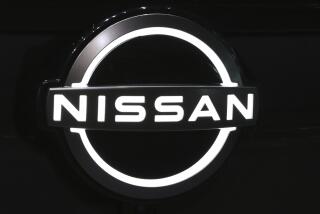Under Duress, a Safer Air Bag
- Share via
The Ford Motor Co. will soon begin to equip its vehicles with so-called “smart” air bags. The system will reportedly use electronic sensors to control the bag’s deployment, based on crash speed and the seat occupant’s weight. Great, but here’s a question for the auto industry: Why wasn’t this done earlier?
Just think about today’s technically sophisticated car options: tighter, more responsive steering at higher speeds; traction control; suspension system sensors that anticipate the severity of potholes; anti-lock braking systems; even downlinks to geosynchronous satellites for those times when hubby refuses to ask for directions. And they couldn’t come up with a safer air bag before now? Oh, please.
Air bags are one of the most important auto safety advances ever. But still, in this decade they have killed 122 people with the explosive force of their deployment. The victims have been mostly children and small adults. Until very recently, the federal response was to urge drivers to put small children in rear seats. The government also called for switches that allow the bags to be shut down. But that’s not a safer air bag.
That changed in September, when Transportation Secretary Rodney Slater proposed giving auto manufacturers four years to design and install smart air bags. So the industry’s action is not some great humanitarian initiative. And there has been some bottom-line handwriting on the wall, too. Chrysler, for example, recently settled before what would have been the first trial ever on the hazards posed by air bags to children.
Meanwhile, the federal push for greater safety is gaining momentum. Auto manufacturers will be required to provide more head protection in future years, and the Transportation Department agreed in September to determine whether more side impact collision protection is needed.
Federal officials should keep the pressure on. The result will be safer vehicles and fewer tragedies.






